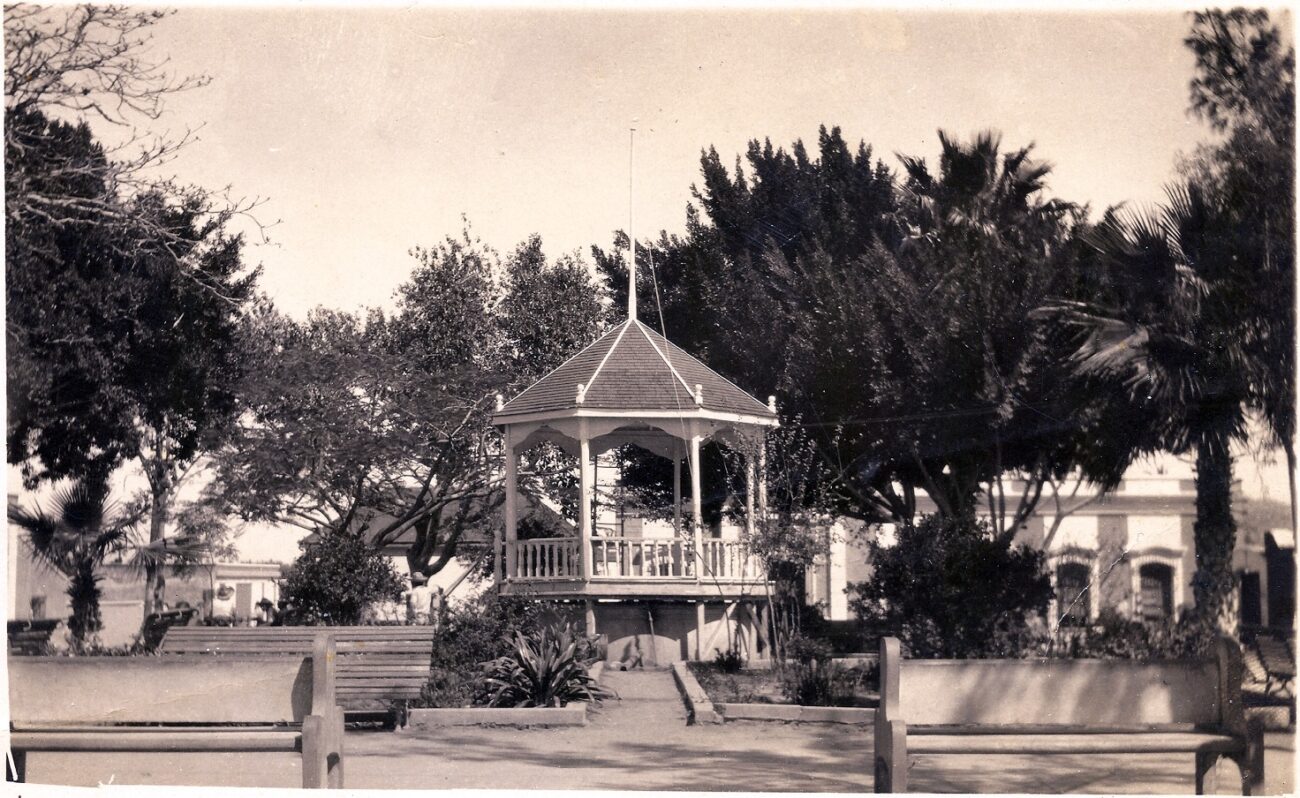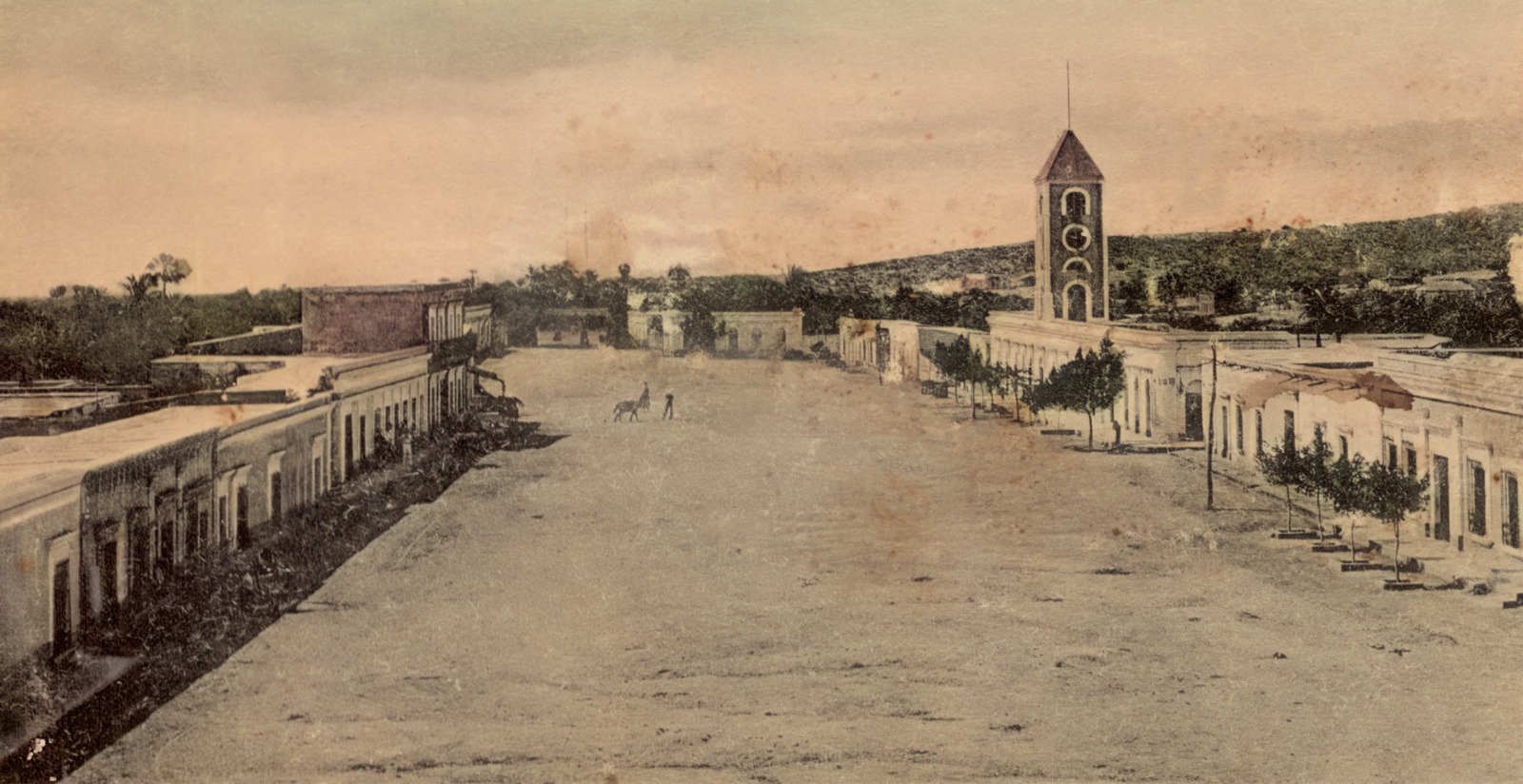The tales that make up the history of San Jose del Cabo remain hidden in the brick walls of La Calle Grande. Most of them you can’t find in a history book. They live in the memory of the children who played on its unpaved streets and have since become adults. These stories get passed on from generation to generation, evolving along the way, always at risk of blowing away in the ocean breeze. We write these stories so they’re not forgotten.
San Jose del Cabo is known for its Jesuit mission, which was established in 1730, cobblestone streets, and art galleries. Among San Jose’s attractions, leading up to the heart of the city like the yellow brick road leading through Oz to Emerald City, is La Calle Grande. Although it may often be overshadowed by more prominent landmarks, the untold stories of this emblematic street will set you on a historic scavenger hunt, enriching your visit to San Jose del Cabo like few other places will.
The Charm of La Calle Grande
Life happened in La Calle Grande. From its beginnings, The Grand Street was an essential part of life in the town. Its name, which means “the big street,” emerged during the days when San Jose del Cabo first became a town. From political battles, to significant artistic, cultural, social, and sporting events, it was a place where people gathered to share laughter, stories, and dreams.
Its path extended from La Casa Cural, which was where the missionaries lived and is now the House of Culture, to the property of Mr. Esteban Green, better known as «The Crossed House.» This street, stretching from north to south, bore witness to the events that make it the town it is today.
Back then, roosters announced the beginning of the day, and as the sun rose, the quiet street slowly came to life like a blooming flower stretching out its petals. The transformation from a simple dirt road to a vibrant cultural epicenter happened in the Golden Era, when, between 1925 and 1945, San Jose del Cabo experienced a period of economic prosperity due to the production of sugar cane and tomatoes along with fishing and shark liver processing.
A common misconception is that the history of Baja California Sur, including San Jose del Cabo’s, is relatively young. However, there are clues all over town that prove that this story began way before you would imagine. These clues might seem trivial compared to places with ruins, pyramids, or palaces. Some cities scream with memories. Perhaps the whispers of the past that come alive when you pay attention are exactly what make La Calle Grande so special. They make themselves known, not to all tourists, but to travelers who seek to enrich their lives with experiences, not just luxury.
If you walk along La Calle Grande with your tourist goggles on, you’ll find restaurants and shops where you can find the perfect souvenirs: everything from huaraches to embroidered dresses to handicrafts. You’ll find Mexican food and drinks. If you put your traveler glasses on, you’ll notice the walls.
The original walls that tell the story of La Calle Grande can be found within Plaza Don Carlos, which was a house built circa 1850 that was restored and turned into a small commercial center. Today, you can enjoy a cup of coffee and a pastry in Cafe Doña Nena and La Panaderia, a burger at Mono Snack bar, buy wine at Clyde Natural Wines or shop for furniture at Taller Maya. As you roam the small Plaza, pay close attention to the bricks. They offer a glimpse of the town’s early days. They witnessed laughter, joy and sorrow, and are a part of history from the mundane to the astronomical. They are evidence of life itself.
Venus, Clocks, and Battles
Once you’ve checked coffee at Doña Nena’s off the scavenger hunt list, you’ll want to continue your journey to the Plaza Mijares. This town square is the heart of the town. If you listen closely, you’ll hear it beat. Try imagining what it looked like back in 1927 when the clock tower inaugurated the Municipal Palace. One day, that clock ticked for the very first time and it hasn’t stopped since, marking the passage of time. It is a symbol of the town’s timeless charm which hasn’t been replaced or removed. As you stand before it, take notice of the Roman numeral four depicted as IIII instead of IV, evidence of its age and the historical craftsmanship.
San Jose del Cabo evolved under the clock’s watchful eye. Across from the Municipal Palace was «The Voice of the South,» the town’s largest store owned by the brothers Valerio and Manuel Gonzalez Canseco where products of all kinds were sold and exported to Mexico City. Among these products were piloncillo (unrefined cane sugar), meats, and vegetables. A few steps ahead was the Ford car dealership, believed to be the second one installed in the country which was also managed by the Gonzalez Canseco family. Today you can find shops and a stunning wedding venue called Goncanseco, where couples from all over the world get married surrounded by the rich history of the warehouse.
If we travel a little further back in time, we’d find ourselves fully immersed in a political dispute as the Mexican forces, though defeated, persisted in preventing the peninsula from falling into American hands in 1847. Among the brave warriors was Lieutenant Mijares, who was mortally wounded while leading a nighttime assault in an attempt to seize the only artillery left in the enemy’s quarters. He succumbed to his injuries the following day. The legacy of Lieutenant Mijares is immortalized in the heart of San Jose del Cabo through a tribute – the Mijares Obelisk.
Even further back, if we stood in the exact same plaza, but in 1769, we’d witness Jean-Baptiste Chappe d’Auteroche, a French astronomer, on his expedition to observe the transit of Venus, making astronomical history. This phenomenon is a rare astronomical event that occurs when the planet Venus passes directly between Earth and the sun, appearing as a small black dot gliding across the fiery ball in the sky. It held immense scientific significance, as it allowed astronomers to measure the distance between the earth and the sun. Once the research was done and as he was packing to leave, Chappe fell ill and suddenly passed away, leaving behind a legacy that continues to inspire generations of astronomers and dreamers alike. To commemorate it, Federico Silva Lombardo designed a monument that was placed right in front of La Casa de la Cultura in 2011.
These monuments stand as silent witnesses. Today, as San Jose has evolved into a lively town filled with art, music, and laughter, they might go unnoticed. But if you stand near them and listen closely, they might whisper in your ear and tell you their stories.
The Old and The New
The evolving landscape of San Jose del Cabo stands as a vivid testament to the powerful impact of tourism on culture. Hospitality runs through our veins, and locals welcome visitors with open arms. As La Calle Grande has borne witness to a huge influx of tourists, it has slowly transformed into a bustling hub of activity. Throughout this transformation, the town has managed to balance the allure of catering to tourists’ needs while safeguarding its precious cultural heritage. By blending the old with the new, San Jose del Cabo presents itself as an enchanting destination where the past harmoniously coexists with the present.
Embracing a town’s heritage enriches our travel experiences. While enjoying the modern delights it now offers, let us not forget the intrinsic importance of preserving its history. As we bid farewell to our exploration of this captivating town, we extend a heartfelt invitation to all travelers: be curious and uncover the untold stories of «La Calle Grande.»




